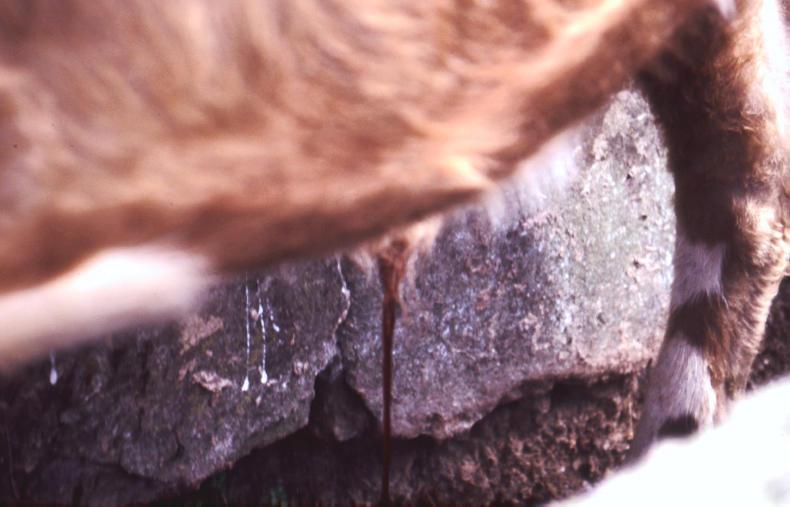The first confirmed case of redwater in 2019 has been detected by the regional veterinary lab in Athlone.
The disease was detected during a post-mortem examination of a two-year-old heifer from Co Offaly.
According to the Department of Agriculture, the farmer had not noticed any signs of illness in the heifer before she was found dead.
The Department has encouraged farmers to be vigilant for the disease for the weeks ahead as it can cause substantial losses.
Those wishing to discuss prevention, treatment and control of the disease should do so with their local vet.
Ticks
Redwater is caused by a parasite called Babesia divergens and it is spread by ticks. It is associated with areas of rough grazing including ground covered with bracken and heather.
Animals which are born and reared in areas where the disease is known to occur do not typically develop clinical signs of redwater.
These signs are more commonly seen in animals which are introduced from areas where it does not occur to areas where it does.
Clinical signs
Clinical signs of the disease include rapid heart rate, high body temperature, red tinge in the urine and “pipe-stem” diarrhoea in the early stages.
As the disease progresses, high body temperature is replaced by a low temperature and diarrhoea is replaced by constipation.
The animal’s gums and around its eye will become pale and urine will take on a dark red appearance.
Read more
Redwater: small parasites which cause the breakdown of red blood cells
Vet bills to soar as EU clamps down on antibiotics
The first confirmed case of redwater in 2019 has been detected by the regional veterinary lab in Athlone.
The disease was detected during a post-mortem examination of a two-year-old heifer from Co Offaly.
According to the Department of Agriculture, the farmer had not noticed any signs of illness in the heifer before she was found dead.
The Department has encouraged farmers to be vigilant for the disease for the weeks ahead as it can cause substantial losses.
Those wishing to discuss prevention, treatment and control of the disease should do so with their local vet.
Ticks
Redwater is caused by a parasite called Babesia divergens and it is spread by ticks. It is associated with areas of rough grazing including ground covered with bracken and heather.
Animals which are born and reared in areas where the disease is known to occur do not typically develop clinical signs of redwater.
These signs are more commonly seen in animals which are introduced from areas where it does not occur to areas where it does.
Clinical signs
Clinical signs of the disease include rapid heart rate, high body temperature, red tinge in the urine and “pipe-stem” diarrhoea in the early stages.
As the disease progresses, high body temperature is replaced by a low temperature and diarrhoea is replaced by constipation.
The animal’s gums and around its eye will become pale and urine will take on a dark red appearance.
Read more
Redwater: small parasites which cause the breakdown of red blood cells
Vet bills to soar as EU clamps down on antibiotics






 This is a subscriber-only article
This is a subscriber-only article










SHARING OPTIONS: